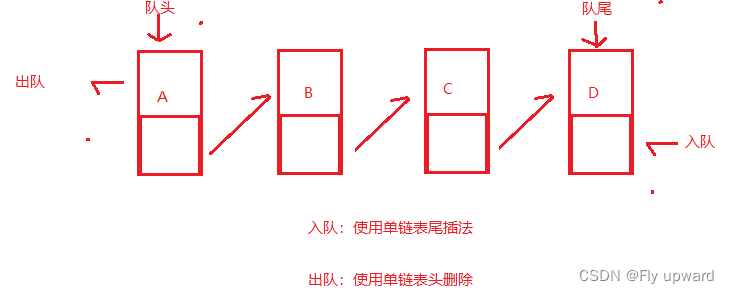目录
1.栈(Stack)
1.1概念
栈:一种特殊的线性表,其只允许在固定的一端进行插入和删除元素操作,进行数据插入和删除操作的一端称为栈顶,另一端称为栈底。栈中元素遵守 “先进后出”的原则。
压栈:栈的插入操作叫做进栈/压栈/入栈,如数据在栈顶。
出栈:栈的删除操作叫做出栈。出数据在栈顶

1.2 栈的实现
1)利用顺序表实现,即使用尾插+尾删的方式实现
2)利用链表实现,则头尾都可以
因为顺序表实现上更为简单,此处使用顺序表实现
1.创建 MyStack 类
import java.util.Arrays;
/**
* 栈的实现
*/
public class MyStack {
public int[] elem;
public int usedSize;
public MyStack() {
this.elem = new int[5];
}
//压栈
public void push(int val) {
if(isFull()) {
//满了就2倍扩容
this.elem = Arrays.copyOf(this.elem,2*this.elem.length);
}
this.elem[this.usedSize] = val;
this.usedSize++;
}
public boolean isFull() {
return this.usedSize == this.elem.length;
}
//出栈,pop 会删除栈元素,peek 获取栈元素,不删除
public int pop() {
if(isEmpty()) {
throw new RuntimeException("栈为空!");
}
int oldVal = this.elem[usedSize-1];
this.usedSize--;
return oldVal;
}
public int peek() {
if(isEmpty()) {
throw new RuntimeException("栈为空!");
}
int oldVal = this.elem[usedSize-1];
return oldVal;
}
//判断栈是否为空
public boolean isEmpty() {
return this.usedSize == 0;
}
}2.main 函数
import java.util.Stack;
/**
* 栈,先进后出
*/
public class StackTest {
public static void main(String[] args) {
MyStack stack = new MyStack();
//压栈
stack.push(1);
stack.push(2);
stack.push(3);
stack.push(4);
stack.push(5);
stack.push(6);
//出栈,pop 是出一个栈顶元素并且在栈中删除
System.out.println(stack.pop());//6
// peek 是获取栈顶元素但不删除栈中元素
System.out.println(stack.peek());//5
System.out.println(stack.peek());//5
System.out.println(stack.isEmpty());//false
}
}3.运行结果

2.队列(Queue)
2.1 概念
队列:只允许在一端进行插入数据操作,在另一端进行删除数据操作的特殊线性表,队列具有
先进先出。
入队列:进行插入操作的一端称为
队尾。
出队列:进行删除操作的一端称为
队头。
2.2 单链表实现队列
队列也可以用数组和链表的结构实现,使用链表的结构实现更优一些,因为如果使用数组的结构,出队列在数组头上出数据,效率会比较低。

单链表实现
/**
* 队列的实现,使用单链表
*/
class Node {
public int val;
public Node next;
public Node(int val) {
this.val = val;
}
}
public class MyQueue {
public Node head;
public Node last;
/**
* 添加队列元素
* 使用单链表尾插法
* @param val
*/
public void offer(int val) {
Node node = new Node(val);
if (head == null) {
head = node;
last = node;
}else {
last.next = node;
last = last.next;
}
}
/**
* 出队
* @return
*/
public int poll() {
if (isEmpty()) {
throw new RuntimeException("队列为空");
}
int oldVal = head.val;
this.head = head.next;
return oldVal;
}
public boolean isEmpty() {
return this.head == null;
}
/**
* 获取队列元素
* @return
*/
public int peek() {
if (isEmpty()) {
throw new RuntimeException("队列为空");
}
return head.val;
}
}main 方法
import java.util.Queue;
public class QueueTest {
public static void main(String[] args) {
MyQueue queue = new MyQueue();
//入队列
queue.offer(1);
queue.offer(2);
queue.offer(3);
//获取队列元素
System.out.println(queue.peek());//1
//出队
System.out.println(queue.poll());//1
System.out.println(queue.poll());//2
System.out.println(queue.poll());//3
}
}效果

2.3 循环队列
实际中我们有时还会使用一种队列叫循环队列。如操作系统在生产者消费者模型时可以就会使用循环队列。环形队列通常使用数组实现。


代码
/**
* 设计循环队列
*/
public class MyCircularQueue {
public int[] elem;
public int front;//队头下标
public int rear;//队尾下标
public MyCircularQueue(int k) {
this.elem = new int[k + 1];
}
/**
* 入队
* @param value
* @return
*/
public boolean enQueue(int value) {
if (isFull()) return false;
this.elem[rear] = value;
rear = (rear+1) % elem.length;
return true;
}
/**
* 出队
* @return
*/
public boolean deQueue() {
if (isEmpty()) return false;
front = (front+1) % elem.length;
return true;
}
/**
* 得到对头元素
* @return
*/
public int Front() {
if (isEmpty()) return -1;
return elem[front];
}
/**
* 队尾元素
* @return
*/
public int Rear() {
if (isEmpty()) return -1;
int index = -1;
if (rear == 0) {
index = elem.length - 1;
}else {
index = rear - 1;
}
return elem[index];
}
public boolean isEmpty() {
return front == rear;
}
public boolean isFull() {
if((this.rear+1) % elem.length == front) {
return true;
}
return false;
}
}2.4双端队列
双端队列(
deque
)是指允许两端都可以进行入队和出队操作的队列,
deque
是
“double ended queue”
的简称。 那就说明元素可以从队头出队和入队,也可以从队尾出队和入队。
3.java 中的栈和队列
Stack
|
方法
| 解释 |
|
E
push
(E item)
| 压栈 |
|
E
pop
()
| 出栈 |
|
E
peek
()
| 查看栈顶元素 |
| boolean empty() | 查看栈是否为空 |
Queue
| 入队列 |
add(e)
|
offer(e)
|
| 出队列 |
remove()
|
poll()
|
| 队首元素 |
element()
|
peek()
|
| 错误处理 | 抛出异常 | 返回特殊值 |























 757
757

 被折叠的 条评论
为什么被折叠?
被折叠的 条评论
为什么被折叠?










